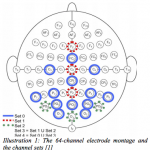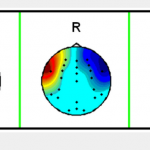Conceptual Art: A Blind Spot for Neuroaesthetics?
Interest in how the brain and body function during aesthetic experience has increasingly spread to different areas of neuroscience and cognitive research as well as to embodied philosophy, art history, musicology and architectural theory. Neuroaesthetics is a collective term I use here to designate various approaches that involve the study of art from the point...
The experience of mathematical beauty and its neural correlates
Many have written of the experience of mathematical beauty as being comparable to that derived from the greatest art. This makes it interesting to learn whether the experience of beauty derived from such a highly intellectual and abstract source as mathematics correlates with activity in the same part of the emotional brain as that derived...
Sonificación de EEG para la clasificación de palabras no pronunciadas
Las interfaces cerebro-computadora (BCI) basadas en electroence- falograma (EEG) son una alternativa que pretende integrar a las personas con discapacidad motriz severa a su entorno. Sin embargo, éstas aún no son utilizadas en la vida cotidiana por lo poco intuitivas que son las fuentes electrofisiológicas para controlarlas. Para tratar este problema, se han realizado trabajos...
A Brain-Computer Interface That Works Wirelessly
After more than a decade of engineering work, researchers at Brown University and a Utah company, Blackrock Microsystems, have commercialized a wireless device that can be attached to a person’s skull and transmit via radio thought commands collected from a brain implant. Read …
Researchers unravel the biology of beauty and art.
But what in the brain triggers aesthetic experiences? And how does knowledge of basic brain mechanisms inform our understanding of these experiences? These questions are at the heart of an emerging discipline dedicated to exploring the neural processes underlying our appreciation and production of beautiful objects and artwork, experiences that include perception, interpretation, emotion, and...
A review of realtime EEG sonification research
Over the last few decades there has been steady growth in research that addresses the real-time sonification of electroencephalographic (EEG) data. Diverse application areas include medical data screening, Brain Computer Interfaces (BCI), neurofeedback, affective computing and applications in the arts. [gview file=”http://interspecifics.cc/downloads/realtimesonification.pdf”]
A Cognitive Theory of the Aesthetic Experience
This paper aims at naturalizing the aesthetic experience on the basis of cognitive sciences. In traditional philosophical aesthetics, the aesthetic experience requires a specific attitude and a characteristic work of imagination. Today, cognitive sciences offer a rich set of empirically corroborated concepts useful in explaining these notions in naturalistic terms. This paper extends these concepts...

Does Emotiv EPOC capture real EEG?
For my earlier article titled “P300 and Emotiv EPOC: Does Emotiv EPOC capture real EEG?” I received an enormous response from various interested parties. Since I’m continuously using the Emotiv EPOC for my research work with good confidence, I thought of extending the discussion about the good side of it with some convincing results. About...

Brain-Computer Interface Based on Generation of Visual Images
This paper examines the task of recognizing EEG patterns that correspond to performing three mental tasks: relaxation and imagining of two types of pictures: faces and houses. The experiments were performed using two EEG headsets: BrainProducts ActiCap and Emotiv EPOC. The Emotiv headset becomes widely used in consumer BCI application allowing for conducting large-scale EEG...
David Rosenboom / Extended Musical Interface with the human nervous system
The original version of this monograph was written in 1989 and published in 1990. It’s purpose
was to document work that had taken place since the publication of my earlier book, Biofeedback
and the Arts, Results of Early Experiments in the mid-1970’s and the time of the original
publication of this monograph. Subsequently, after all copies of the...
Daniel J. Levitin / This is Your Brain on Music
Music’s evolutionary origin is established because it is present across all humans(meeting the biologists’ criterion of being widespread in a species); it has been around along time (refuting the notion that it is merely audio cheesecake); it involves specialized brain structures, including dedicated memory systems that can remain functional whenother memory systems fail (when a...

